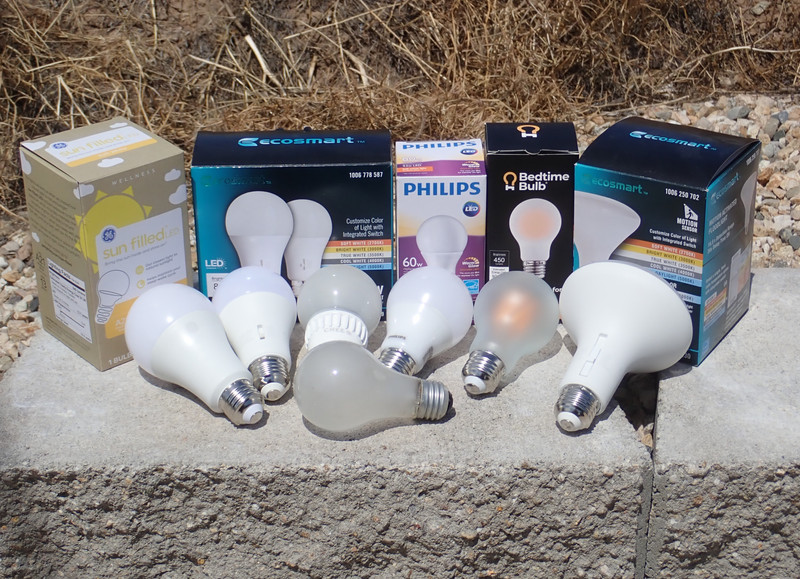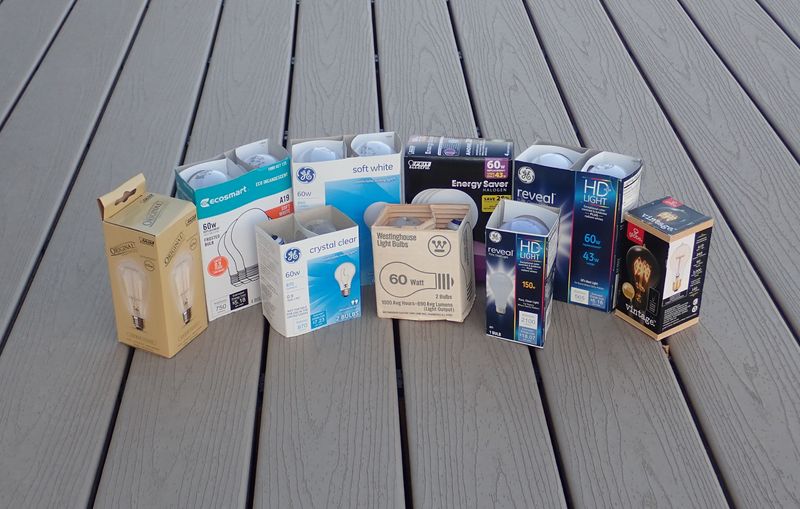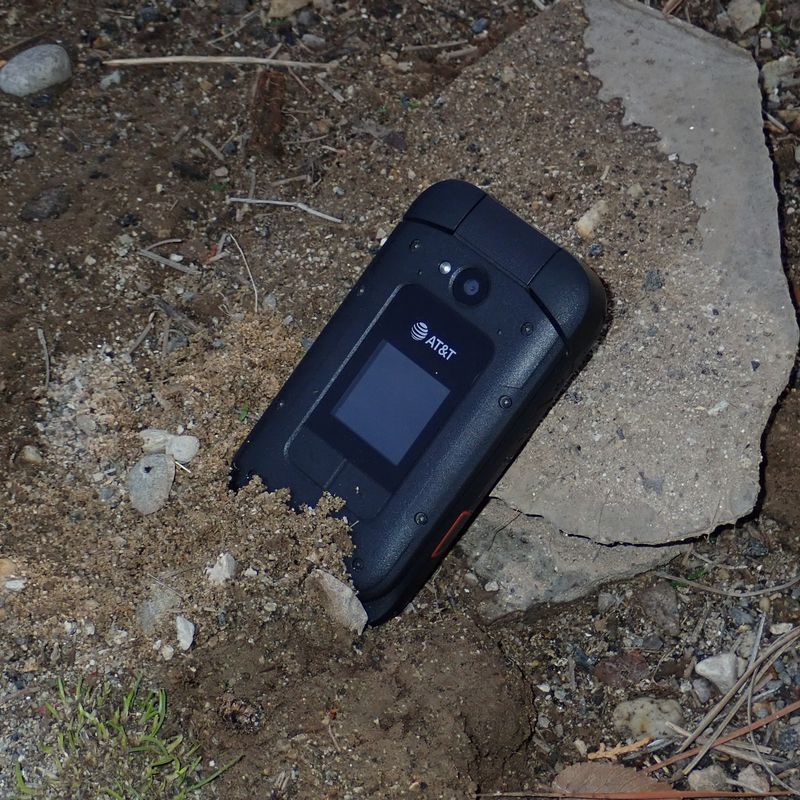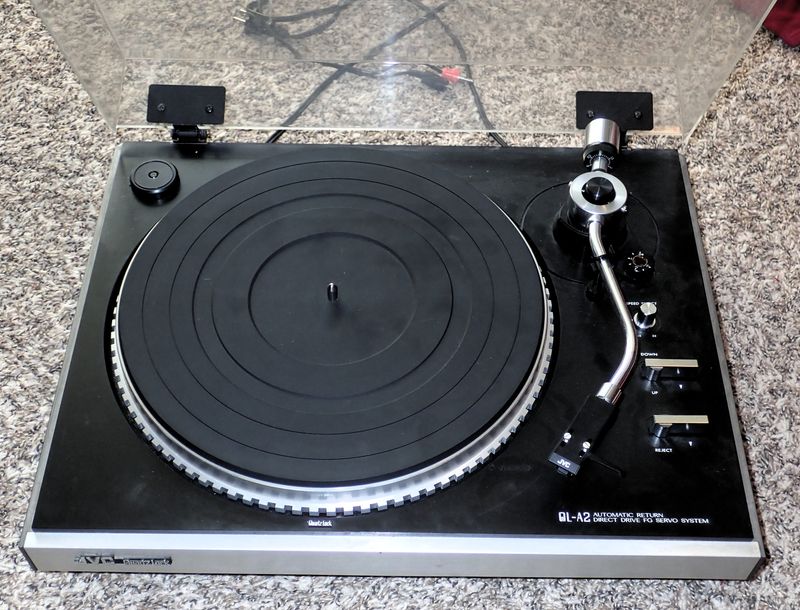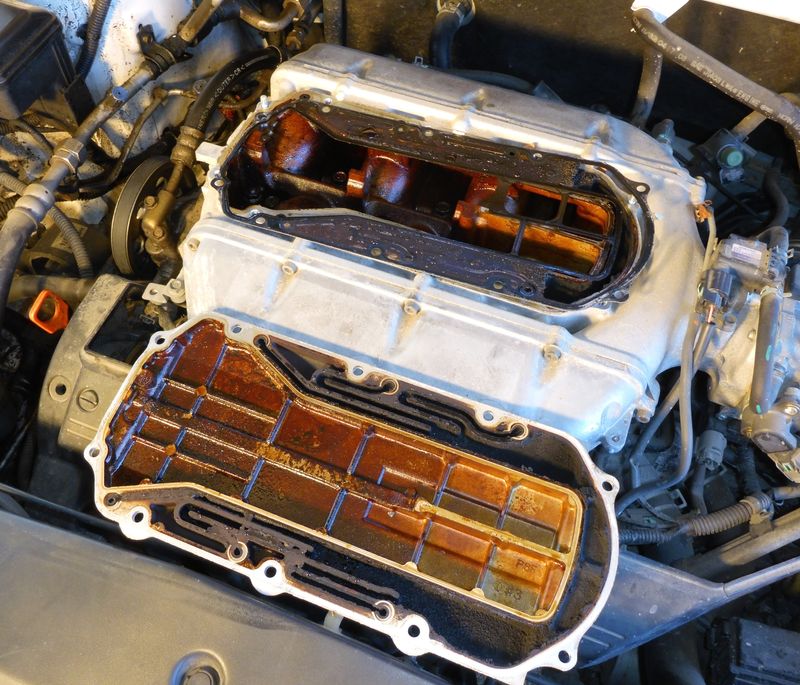This week’s set of bulb reviews is about a range of regular LED bulbs you can find various places - they’re not wifi connected, they’re not networked, they’re just bulbs (do we have to call them “dumb bulbs” now?). Some are better than others in the evenings. And some have a switch on the side you can toggle to change the color temperature, which is a new feature I’ve not seen until quite recently.

Disclaimer: I’ve been trying to actually bother with affiliate links, so some of the links in this post may link to things that give me a bit of a kickback.
Bedtime Bulb
I’m starting out with a bulb that’s specifically sold as an “evening time bulb” - replace your other LEDs with this, use it in the evening, and it’ll help you sleep. You can buy them from Amazon , from eBay, or direct from the Bedtime Bulb site, and the directions helpfully tell you to put them in your evening lights.

The bulb claims to be a replacement for a 40W incandescent, which seems about right with the light output. They’re very warm (2200K - most “soft white” LEDs are 2700K), dim rather nicely, and claim a high CRI - though, of course, they don’t mention the R9 value.

The side makes a variety of claims about the bulb - which I’ll look at below. LessBlue at least seems to imply it should be quite low in the blue emissions that convince the human body it’s daytime and you should stay awake. Vivid colors implies a high CRI (they claim 95), and it shouldn’t be flickering.

If you’re curious about the envelope for the bulb, it is glass. One of mine failed early (an emitter was flickering and it was a quick warranty replacement), so I decided to pop it open and take a closer look. A quick tap with a hammer, and, yup, it’s glass. Inside, you have the usual “string” LED emitters that are commonly found in the “LED Edison style” bulbs one sees around. I expect the failure of mine is related to the failed central glass shaft - things are wobbling around a good bit more than I’d expect.

The emitters glow along the bulk of their length. Talking with the founder (he’s quite responsive by email), there are some power conversion electronics down in the base of the bulb that help provide the clean flicker-free light.

Playing with exposure, though, you can see that each of the strings is a whole bunch of LED emitters, presumably wrapped in a thick phosphor layer that helps keep flicker down. I’m really not exactly sure how this type of LED works in detail, but they’re quite common in the “artistic” bulbs for sale.

So, what’s the spectrum look like? Well, the bulk of the spectrum is quite good - it’s pushing far into the reds (my meter’s sensitivity is falling off quickly by the reds), but in terms of blue, it really doesn’t seem to be much of an improvement over the other bulbs I’ve seen. Looking at this, it’s really no “less blue” than most of the 2700K bulbs I’ve seen - the shift down to 2200K is more in the addition of reds, not a reduction in the blue.

Dimming the bulb, while it dims quite well, there’s no reduction (beyond the general dimming) in blue, and the spectrum peak actually seems to shift over into the greens a bit more - there’s less red than when bright. I really do have a preference for bulbs that redshift as dimmed.
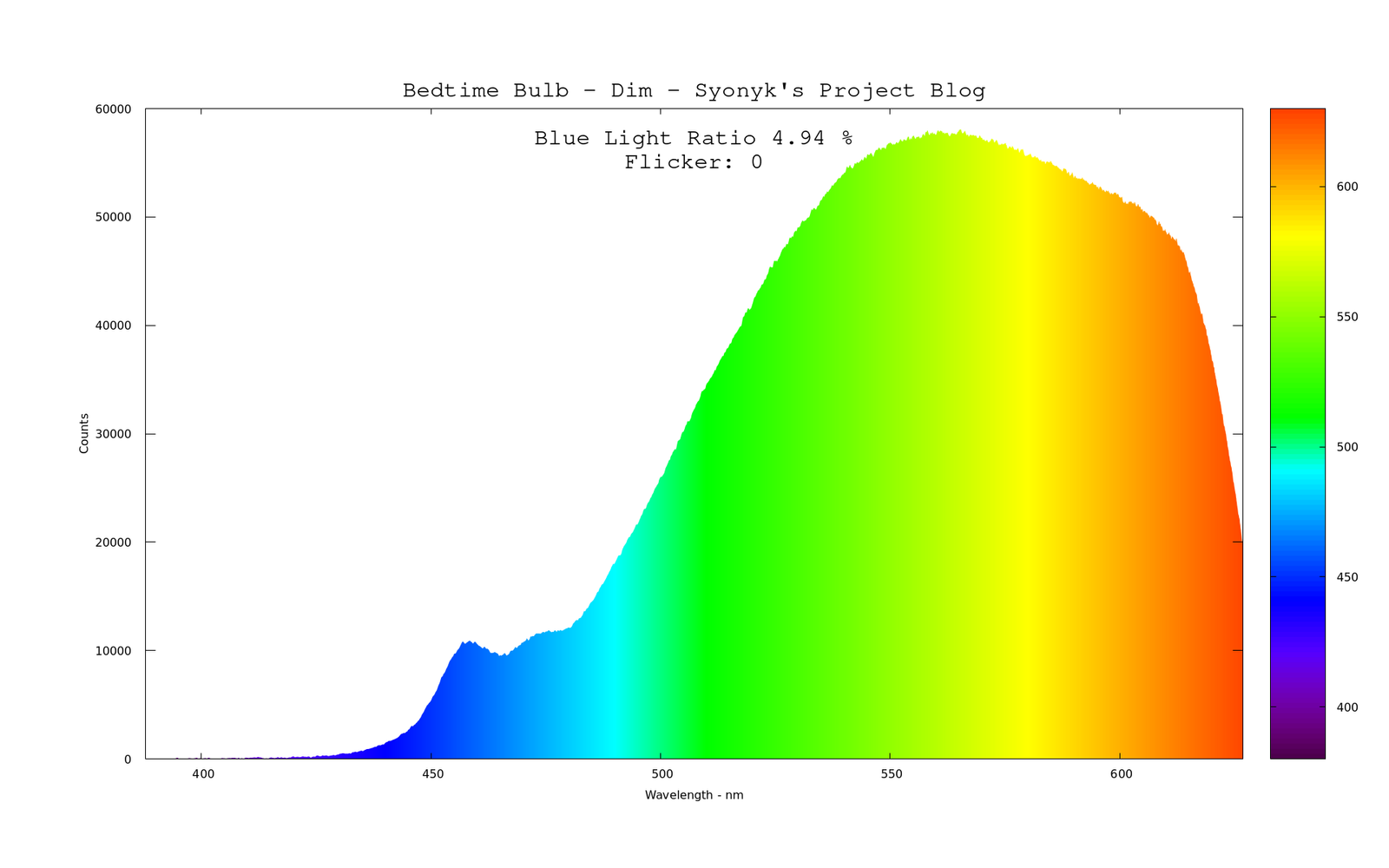
I believe the CRI numbers - the bulb does extend the spectrum further over into the reds fairly well. But in terms of low blue, I’m just not seeing that. It’s really no better or worse, down in the blues, than most of the 2700K bulbs. It’s still leaking an awful lot of blue in my terms, and I’m not sure that it’s really going to be much better than other bulbs at night (beyond being dimmer). It’s a great demonstration that “What it looks like” in terms of the color doesn’t really show you what’s going on with the blues. The bulb would greatly benefit from being a bit of an amber tint that helps knock out more of the light below 500nm or so.
Now, the flicker claims? They meet that claim amazingly well. A high speed video (240fps) of this bulb is utterly indistinguishable from a photo of it in operation - and that’s impressive. And they do dim well.
GE Sun Filled
Another recent “high end LED” bulb is GE’s Sun Filled brand (Amazon) (eBay). They claim all sorts of interesting things, and I picked up a Soft White version (2700K) at my local grocery store for far too much money (these are $10+ bulbs).

They claim that the bulb isn’t emitting the blue spectrum peak - certainly easy enough to test. I’m glad to see at least some LED manufacturers coming around to recognizing that LEDs and blue emissions aren’t good for human sleep.

The other side talks more about blue. They claim a fairly impressive CRI of 97, and quite surprisingly list the R9 value as 80. The R9 value is the “pure red” rendering, and a lot of LEDs don’t bother going very far into the red for efficiency reasons (lumens per watt doesn’t really reward red, even though human vision cares a lot about red).

And, finally, the rather awful 3 year warranty (3 hours per day at 3 years is barely over 3000 hours) that requires proof of purchase (do you keep all your light bulb receipts?). That’s not encouraging. As is pretty typical, the bulb isn’t suited for use in totally enclosed or recessed light fixtures, which means you can’t use it in most of the lighting that modern homes are set up with (or, you can, but you’ll void the warranty and cook it to an early death).

It… looks like literally every other modern LED bulb. Except it’s bigger. Nothing special here.

What’s the spectrum look like? Well… it does, indeed, lack the blue peak! On the other hand, applying my “blue light ratio” calculation (which applies a blue sensitivity curve for humans to the spectrum) shows that it’s not particularly amazing. It’s not awful, but neither is it particularly low blue for evening use. It does look like the sort of spectrum that leads to a high CRI, though - and while my meter’s sensitivity is dropping off into the reds, there’s quite a bit there (so I’m inclined to believe their R9 CRI value). But comparing to the Bedtime Bulb spectrum, it’s still short on red, and it’s very much playing the “peak in the green for maximum lumenous efficiency” game you see in a lot of LEDs.

Dimmed, not much changes. There is a bit less blue, but it’s not particularly low blue in the region that impacts human sleep. I will say, it dims very well, which is nice - we’re sensitive to the absolute amount of blue in our light after dark, so being able to smoothly dim down deeply is nice to see. They’re certainly a nice LED, but they mostly replace the “blue peak” with a “fat blue region,” and the end result doesn’t seem particularly impressive to write home about as far as “low blue” goes. They are nice daytime use LEDs, though!

Vintage Cree Bulb
The next bulb I’m looking at is an old Cree bulb - I got a used one on eBay because, of course, these aren’t sold new anymore (there’s a trend here - another LED I’m looking later isn’t sold new either, and I like that one too). I want you to take a look at the heavy heatsink around the base of this bulb. Older LEDs had enough heatsinking that they didn’t overheat, even in enclosed fixtures, and this is a perfect example of it. The envelope is glass, and it’s coated with a bit of a rubber layer to help keep it from breaking. The new stuff doesn’t have the heatsink and is a cheap plastic enclosure. They overheat, and I’ll bet this bulb will long outlast the newer ones, because it’s designed to work, not designed to be cheap.

The other interesting behavior is that the LEDs are on a central stalk - they emit to the sides, and there’s a dark spot at the top of the envelope. I will say that the flat emitters on modern LEDs do a better job of lighting the envelope evenly.

How are they? Well… they’re running a higher frequency (lower wavelength) blue emitter than most of the modern bulbs - and there’s that bit of a gap between the blue peak and the rest of the spectrum that happens to be more or less where humans are sensitive to blue. Do the math with the human sensitivity, and it’s somewhat lower in “human sleep impact blue” than a lot of the more modern bulbs. Again, it’s got a nice fat spread for the rest of the spectrum, though it’s tapering off earlier than I’d prefer in the reds.

Dimmed (it dims nicely), the blue peak drops by quite a good amount compared to the rest of the spectrum, while still lurking low in the wavelength. This is a properly well behaved bulb compared to the newer stuff! I’d still prefer more red, though.

Ecosmart BR30 Flood
My next bulb here is an example of something fairly new - it’s a bulb with a switch on the side that allows you to select the color temperature at installation time. This one, as I found out when I got it home, is actually a motion sensor light, and I have to say, a dimmable, color temperature selectable, motion sensor light is… well, it’s obviously a thing, but I can’t exactly figure out what it’s for.

The interesting feature of this bulb is that it claims that it goes down to a 2000K color temperature when dimmed. The “red shift when dimmed” bulbs used to be more common (Philips Warm Glow were everywhere), but they’re somewhat harder to find these days. Going down to 2000K, though… that’s an interesting claim!

This looks like a pretty sane bulb. Suitable for damp locations, and no restrictions on enclosed fixtures (which would be “literally everything these go into”).

The side of the bulb has a switch that does exactly what it says - lets you select the color temperature! Then, at the bottom, there’s the DuoBright setting which allows you to set the brightness and color temperature with an external dimmer. I’ll show you how that works shortly!

Starting out with the “fixed color temperature” modes, the 2700K looks pretty decent - it’s a nice fat curve, extends out into the reds smoothly, and doesn’t have that much blue.

Dimmed, as one expects from single color temperature LEDs, the spectrum is almost identical - so I’ll be sticking with the “bright” curves for this bulb until I get to the DuoBright section.

There really are no surprises here. As the color temperature selected goes up, the blue comes up, and the red drops off - it’s just mixing between a few different emitters.

At the 5000K point, there’s more blue, less red. It’s still not an incandescent spectrum, and it’s still peaking in the greens, as is fairly common for the “high color temperature, high efficiency” emitters common these days.

Now, how about the DuoBright mode? In full brightness, this should be right around the 5000K mark, and if it looks nearly identical to the previous curve at 5000K, this is working exactly as intended.

Buuuut, dimmed? What’s this? It claims it goes down to a 2000K color temperature on DuoBright modes, and it sure looks like it’s done something novel! Lots of red, and almost no blue! Why can’t we get this mode as a normal selectable option? No idea, but this is an impressive curve. Just, unfortunately, only available when rather dim. The color shift with dimming isn’t smooth, either. At some point, midway down the dimmer, the light jumps from a very blue tinge to a very red tinge - it’s not a smooth transition like one might expect. But, I have to say, dimmed… these might be an interesting evening lamp. They’re among the lowest blue spike I’ve seen yet! Why can’t I just make it do that regularly? Amazing feature, awful interface to it. Of course.

Ecosmart A19 Color Switching LED
Moving on, the Ecosmart “standard” bulbs with the toggle switches. You’ll notice that these lack the nice DuoBright feature from the previous bulb. They’re just boring old bulbs with the switch on the side to toggle the color temperature.

The back has nothing terribly interesting, though these are rated for enclosed fixtures, and can be dimmed (poorly, and I hate the sickly grey you get with dimmed high color temperature LEDs, but they’ll do it).

Marketing: “Make our bulbs look good!” Designers: “Uh… OK… sure, we’ll grey out the other half of the house image.” These “Makes your house brighter and clearer!” sort of marketing stuff is heavily overdone, but, hey, it’s here. Why is their 5000K any different from anyone else’s 5000K? They don’t bother explaining that, they just have some “Ours Better!” thumping on the box. They claim 3% for dimming, and I’ll believe it - I’ve tossed it at a lux meter on the table below my test rig, and it actually manages closer to 2%.

I’m still somewhat baffled by the need for a color temperature switch on the light bulb, versus just selling bulbs with different color temperatures, but… again, I’m guessing this is cheaper than having to make and stock multiple products, and you can make everyone happy. Or something. It seems to be more of the “Encrapification of everything” going on, where lowest manufacturing cost drives everything, but… this is what the modern world is.

Starting out in the 2700K setting, it’s a white LED. There’s somewhat less than I would expect for this color temperature, but there’s not a huge amount of blue either - not much better or worse than anything else down at this color temperature.

Dimmed, oddly enough, there’s more blue in the human-sleep-messing-with regions. I’ve seen this on a few bulbs, and I’m not quite sure what causes it. In any case, there’s nothing special about the 2700K light here.

Moving up to 3500K, there’s a lot more blue, as expected, and there’s no real difference between bright and dim curves from this point on, so I’ll stick with the bright ones only. However, at 3500K especially, you can see the bulb flickering between the emitters without any high speed camera - it’s visible on the wall. Ew.

All the way up at 5000K, it’s… yeah. That’s a 5000K bulb. Very blue. Nothing spectacular here, nothing special to report. Just a normal enough white LED curve.

Philips Warm Glow
Another bulb I’ve used in the past (which, of course, is now end of life and hard to find - you can currently find plenty on eBay and if you search through the sponsored rubbish, Amazon still has a few as well) is the Philips Warm Glow. These are red shifting bulbs - as you dim them, they shift further red, more or less emulating the behavior of an incandescent bulb. On paper, they’re pretty good, and I do still use some in the house.

They are rated for enclosed fixtures and claim a 15k hour life. Now explain to me why four of the five I installed a few years back in the dining room have died…

Five year warranty, lasts 22 years. Hm. There’s something missing here… again, I’ve had a lot of these die already. They either lose one of the two emitter chains (probably a burned out LED), or they go into a weird flickering state. Or, in one case, start buzzing annoyingly.

They’re a bulb. Flat plate emitter with LEDs on it, plastic enclosure. They are a bit glossier than some other bulbs, though.

Bright, they look more or less like any other 2700K LED bulb - that spike in the blue in the 445-450nm range, and a decent enough curve, though not an awful lot over in the reds.

Dim it, the blue peak shifts right up into that 460nm range, you get only slightly less blue impact, and the spectrum peak shifts over slightly. It’s definitely redder visually, but in terms of an actual impact on blue light at night, it’s not particularly impressive in my book. Sad, really, because they do look good while they do it!

But these are, at least, better than some other bulbs as they dim. I’ve got one of them next to a normal 5000K bulb, and you can really see the color difference - but this is bright.

Dimmed down, the Warm Glow still looks OK (it’s red shifted), but the 5000K bulb is just a sickly grey when dimmed - the “dimmable daylight” sort of bulbs are one of the most uniquely ugly sources of light I’ve seen, when dimmed. It’s just gross.

And, in fact, there’s even some research on this! The Kruithof Curve describes, subjectively, how human preference on light changes with overall brightness, and it looks something like this. People just don’t like dim light to look much other than rather red.

I’d love to say good things about them, but they’re not for sale anymore except new old stock, and the failure rate on them, at least in my use cases, has been rather staggeringly high (I believe I’ve had 4-6 of them fail inside 6 years in somewhat regular use). They’re not bad, and they do look good, but I’ve just found them to be staggeringly unreliable in regular use.
Comparison to Incandescents
All of this is interesting, but the reason I started this is to compare LEDs to incandescents where it matters - because I’ve heard the claim made that “Well, sure, LEDs have a blue peak, but they’re still less-blue than any incandescent!” - with the implication that LEDs are better in the evening than incandescents. So, what’s an incandescent bulb spectrum look like?
This is a bog standard 60W frosted incandescent - the same thing at least a lot of people here grew up with. It’s a fat blackbody spectrum (at least as far as my meter can show - again, it drops off in the reds substantially, and in reality the emissions keep climbing into the infrared). And look at that - if you run the “blue ratio” math, yeah. At full brightness, there is an awful lot of blue in it, and, in fact, more blue than any of the “warm white” LED modes I tested. So, myth confirmed? Well, hold on, because if you’ve read my other posts on the matter, I talk an awful lot about dimmers too. What happens when we dim it?
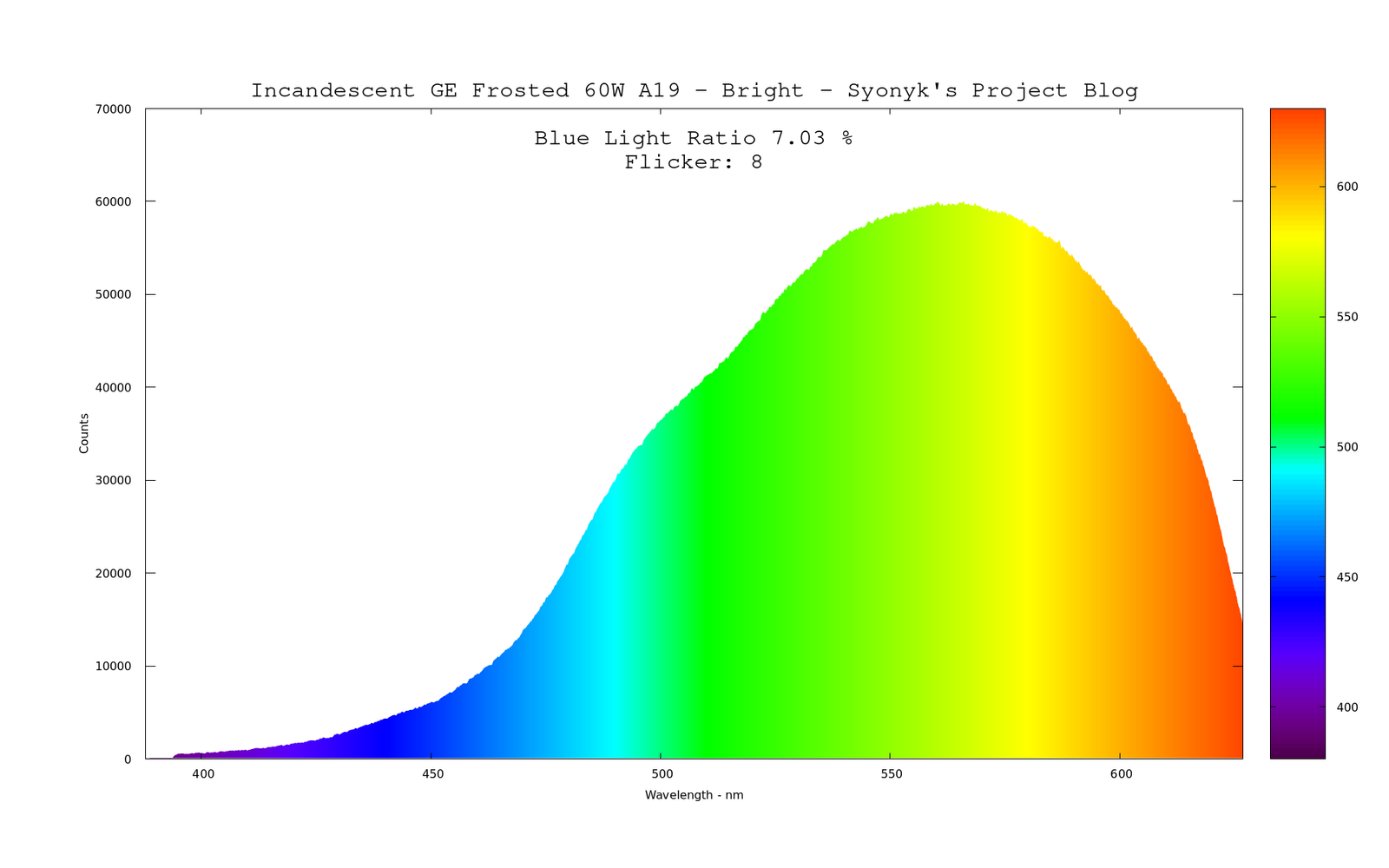
The answer is that when you dim the bulb deeply, you lose almost all the blue, and gain quite a bit of red in the deal. Dimmed down, the boring old incandescent is less blue than even the fancy, “low blue” sort of modern LEDs (and even beats out the otherwise impressive 2000K DuoBright flood). LEDs don’t change their spectrum significantly as you dim them, but incandescents do. And the change is consistently to have far less blue. So when I talk about how you should be using dimmed incandescents in the evening, this is why. But I’ll talk more about incandescents next post.
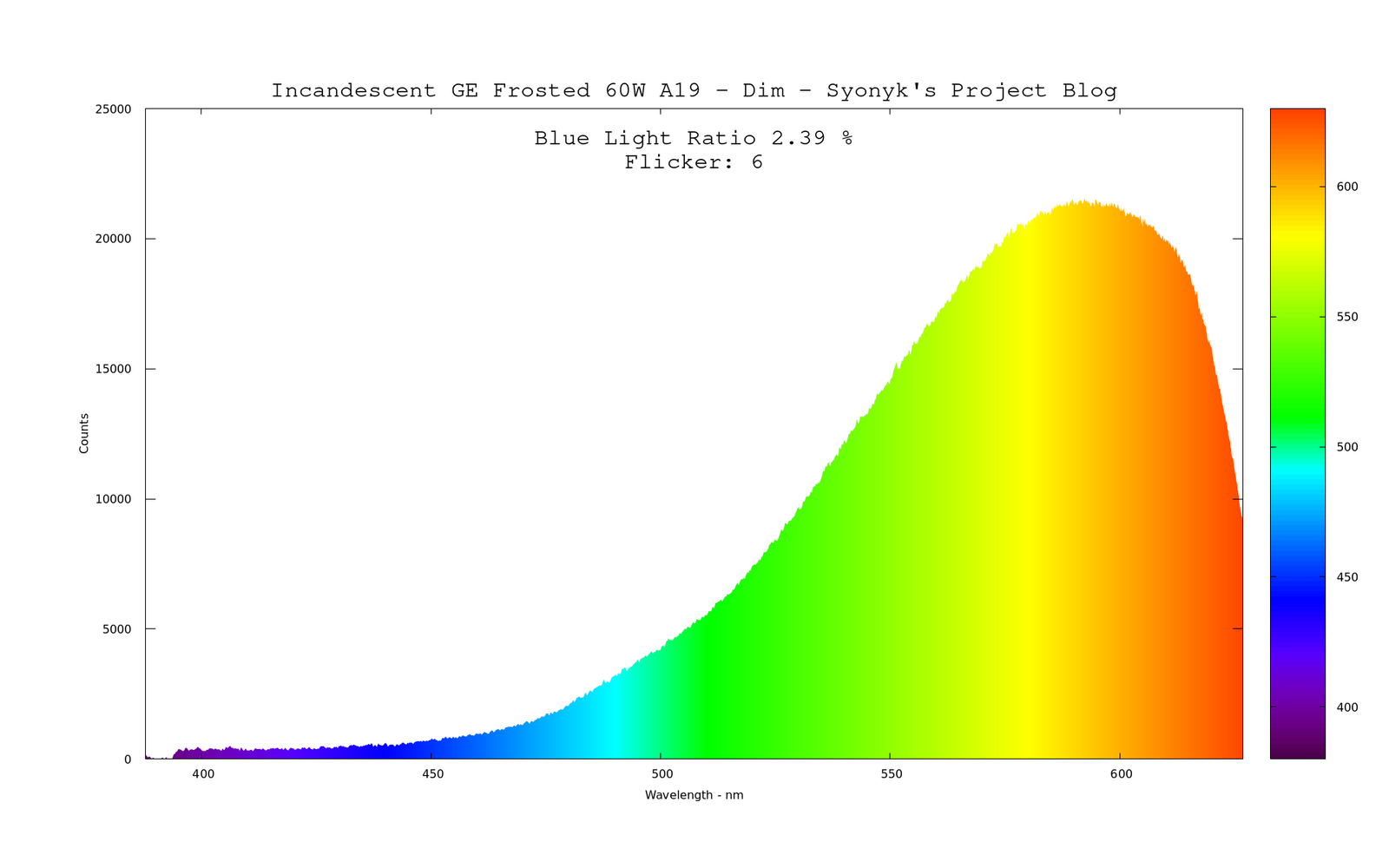
Final Thoughts
I’ve been poking and prodding a lot of LED bulbs for this project, and where do I stand after all this? A solid “Meh.” Modern LED bulbs are fine, if it’s bright out (at which point you should be letting natural light in). The blue “daylight” ones are good to wake you up in the morning. But I’ve just not found any I really like after the sun goes down. The Bedtime Bulb is better than many, and that flood with the dim Duobright mode has a properly impressive curve, but you can’t just select that mode, and the behavior of the bulb going from “daylight” to “really nice” while dimming is quite nonsensical for inside a house. The GE Sun Filled are similarly “better than some,” and have an impressive CRI, but they’re still pretty darn blue in the evenings.
There are some higher end bulbs that cost $30/bulb, and come in nothing smaller than a 6 pack, and I hear good things about them, but neither do I really feel like dropping the money on them just to find out that they’re a white LED with a better spectrum over in the reds. I’m just going to continue using dimmed incandescents in the evening, and not worry about the blue. And if you want to do this, you’d better raid eBay, because the incandescents are very much going away.
What have I been reading by in the evenings? It depends on location, but one of them is a nice older 60W bulb (1000 hours at 130V - so well north of 2000 hours at our standard 122V, and far longer dimmed as I use them). And, trust me, they look good. But I’ll talk more about them next time.

Comments
Comments are handled on my Discourse forum - you'll need to create an account there to post comments.If you've found this post useful, insightful, or informative, why not support me on Ko-fi? And if you'd like to be notified of new posts (I post every two weeks), you can follow my blog via email! Of course, if you like RSS, I support that too.
